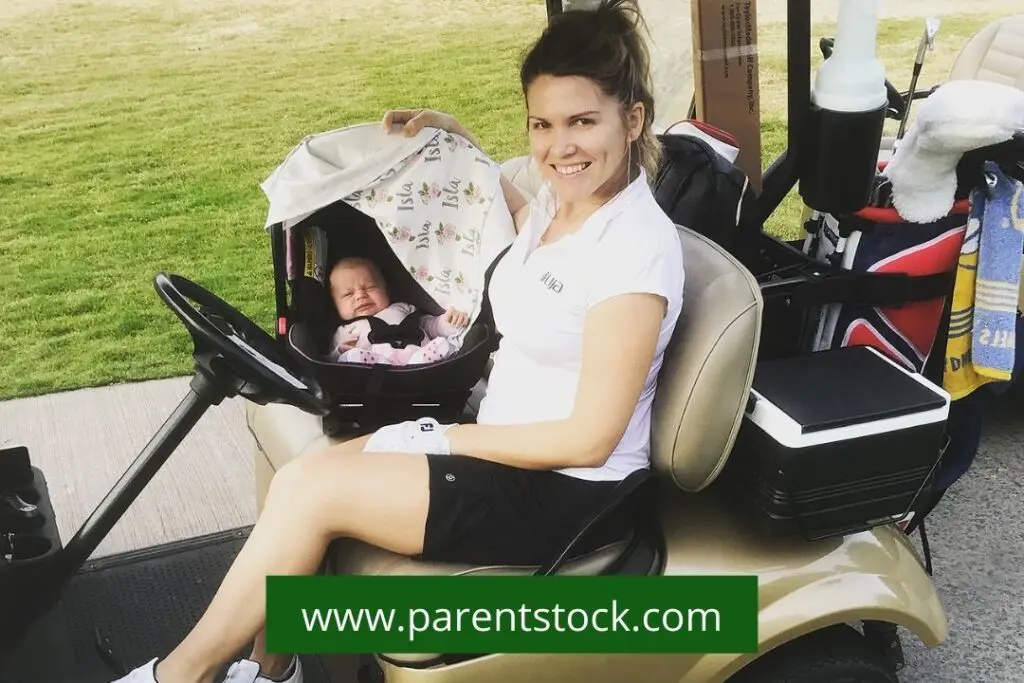As a parent, making sure your baby is safe in the car is important. Keeping up with all the new safety regulations and guidelines can be daunting. Knowing when it’s okay for your little one to move forward-facing in their car seat is an important decision that needs to be made carefully.
This article will help you make smart choices about when is best for your baby’s health and well-being so they can stay safe on those long family road trips.
Learn what the experts say about when it’s time to switch from a rear-facing car seat to a front facing one, starting with 2021 and looking ahead to 2023!
Understanding Car Seat Laws
As we approach the year 2023, it’s important to understand the car seat laws that are in place to protect our children. These laws vary by state, so it’s important to research the specific laws in your area.
However, there are some general guidelines that can help ensure your child is properly protected. For example, infants should always be in a rear-facing car seat until they are at least one year old and weigh 20 pounds.
Toddlers should transition to a forward-facing car seat with a harness until they reach the height and weight limits of the seat. And finally, children should remain in a booster seat until they are big enough to safely use a seat belt.
By following these guidelines, you can ensure that your child is protected while riding in the car.
What to Look for When Shopping for a Car Seat
When it comes to shopping for a car seat, there are a few important factors to consider. The first and perhaps most crucial is safety. Look for a seat that meets or exceeds federal safety standards and has features like side-impact protection and a secure harness system. Comfort is also key, especially for long car rides.
Check for a seat with ample cushioning and adjustable straps to ensure a secure but comfortable fit for your child. Finally, consider the price and the lifespan of the seat. It may be worth investing in a pricier, high-quality seat that can grow with your child and last for several years.
Shopping for a car seat can be overwhelming, but with these key factors in mind, you’ll be well on your way to finding the perfect seat for your little one.
Benefits of Forward-Facing Car Seats
Forward-facing car seats offer several benefits for children’s safety while riding in a vehicle. These car seats are designed to protect the child’s head, neck, and spine in the event of an accident, as they face forward and absorb the impact of a collision.
Additionally, forward-facing car seats come equipped with sturdy straps and harnesses that keep children securely in place, reducing the risk of injury from sudden stops or turns. Many forward-facing car seats also feature adjustable recline positions, making it easy to find the most comfortable position for the child.
Overall, investing in a forward-facing car seat is an excellent way to keep your child safe and secure during car rides, giving you peace of mind while on the road.
Knowing When Your Baby is Ready to Face Forward
As a parent, it’s important to know when your child is ready to face forward in their car seat. Generally, it’s recommended to keep your child in a rear-facing car seat until they are at least two years old or until they reach the height and weight limit for their seat.
When it’s time to face forward, look for signs of readiness, such as if your child can sit up unsupported, has good head and neck control, and is over the weight limit for their rear-facing car seat.
Always make sure the car seat is installed correctly and your child is properly buckled in before hitting the road. By following these guidelines, you can ensure your child is traveling safely and comfortably in the car.
When Can Baby Face Forward in Car Seat?
The American Academy of Pediatrics recommends that children remain in a rear-facing car seat until they are at least two years old or have reached the maximum height and weight limit for the seat. However, all children develop at different rates, so it’s important to check with your pediatrician before transitioning your child to a forward-facing car seat.
By following these guidelines and investing in a high-quality car seat, you can ensure your child is travelling safely and comfortably while on the road. For more information about when baby can face forward in their car seat in 2023, please consult your local childcare professional.
What Type of Car Seat is best for Your Child
As a parent, one of the most important decisions you will make is choosing the best car seat for your child. The type of car seat you need will depend on your child’s age, weight, and height. Infants should be placed in rear-facing car seats, while toddlers can transition to a forward-facing car seat.
It is important to note that children should remain in a car seat for as long as possible, based on the manufacturer’s recommendations, and always in the back seat of the vehicle. Additionally, it’s crucial to ensure that the car seat is installed correctly to provide maximum protection for your child in the event of an accident.
Remember, choosing the right car seat is not only a legal requirement but also a critical step in ensuring your child’s safety while traveling.
FAQs
When can my baby face forward in their car seat?
A: The American Academy of Pediatrics recommends that children remain in a rear-facing car seat until they are at least two years old or have reached the maximum height and weight limit for the seat. However, all children develop at different rates, so it’s important to check with your pediatrician before transitioning your child to a forward-facing car seat.
What type of car seat is best for my child?
A: The type of car seat you need will depend on your child’s age, weight, and height. Infants should be placed in rear-facing car seats, while toddlers can transition to a forward-facing car seat. It is important to note that children should remain in a car seat for as long as possible, based on the manufacturer’s recommendations, and always in the back seat of the vehicle. Additionally, it’s crucial to ensure that the car seat is installed correctly to provide maximum protection for your child in the event of an accident.
Are there any special features I should look for when buying a car seat?
A: Yes! When choosing a car seat, look for features such as adjustable headrests and adjustable recline positions, making it easy to find the most comfortable position for your child. You may also want to invest in seats with additional safety features like side impact protection or built-in cup holders. Be sure to read the instructions and reviews carefully before making your final decision.
What is the best way to ensure my child’s safety while travelling?
A: Always make sure the car seat is installed correctly and your child is properly buckled in before hitting the road. By following these guidelines, you can ensure your child is traveling safely and comfortably in the car.
Additionally, you may wish to invest in a high-quality car seat with additional safety features for maximum protection in case of an accident. Don’t forget to check with your pediatrician about when it’s appropriate for your baby to transition from a rear-facing to forward-facing car seat.
Conclusion
In conclusion, investing in a high-quality car seat is one of the most important decisions you can make as a parent. Not only is it a legal requirement, but it’s also critical for ensuring your child’s safety while on the road. Different types of car seats are designed to suit children at different ages and weights.
Be sure to consult with your pediatrician about when it’s appropriate for your baby to transition from a rear-facing to forward-facing car seat.
Finally, always follow the manufacturer’s instructions and ensure that the car seat is installed correctly before taking off on any trips! With this information in mind, you can feel confident knowing that your little one is travelling safely and comfortably in their car seat.




